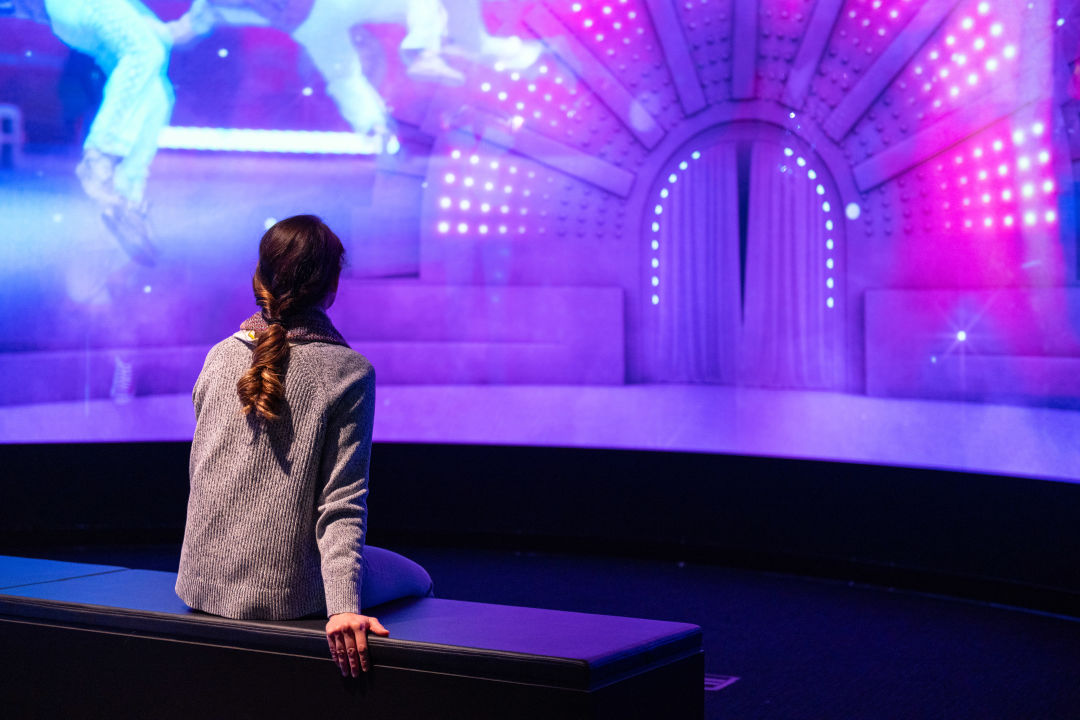A Renewed Celebration of Circus History at The Ringling Museum

Two new exhibitions at The John and Mable Ringling Museum of Art explore the history of the circus and the traveling carnival. In the Museum of Art, On the Road features photographs by Jill Freedman and Randal Levenson that capture a moment in time for the traveling circus and carnival throughout the 1970s. The Greatest Show On Earth® Gallery is the latest addition to the Circus Museum. The new permanent gallery celebrates the era of modern circus that began with Irvin Feld’s purchase of Ringling Bros. and Barnum & Bailey™ in 1967.
On The Road evokes a familiar American idiom and urge to “run away and joining the circus,” which expresses a desire for freedom and flight from oppressive circumstances or just from the mundane realities of life. Photographer Jill Freedman documented the “backstage everyday life of this ancient, closed society and the people who live in it,” while traveling with the Clyde Beatty-Cole Bros. Circus. This moment in time was unique, in that her work observes a period when the circus under the big top was past its heyday.

Similarly, Randal Levenson took to the road during the same decade, but he followed along with traveling carnivals. Not merely a spectator, Levenson also immersed himself in the life and day-to-day work of the itinerant carnival, working alongside carnies to hammer stakes and raise tents. Many of his subjects were performers in sideshows; some, such as the “tattooed lady” Artoria Gibbons, presented themselves as “human oddities” for curious spectators. Despite their lives as performers, Levenson observed that “they all desperately wanted to join in with the outside, ‘normal’ society: to have a house, a family, etc. Behind the stage they were simply regular people to one another.”
While the photographic exhibition reveals the end of an era, the new Gallery within the Circus Museum reveals how Ringling Bros. and Barnum & Bailey grew to become one of the most well-recognized brands in the world.The Greatest Show On Earth Gallery modernizes the museum’s expansive history of the circus by exploring the first fifty years of the Feld family's stewardship during which they brought circus entertainment out from under the big top and into the arena.

The new permanent exhibition reveals how the circus experience was brought to new heights. The arched entrance to The Greatest Show On Earth Gallery is crowned by a brightly lit Ringling Bros. and Barnum & Bailey sign, an artifact donated by Feld Entertainment Inc., that traveled across the country with the touring show. That iconic marquee invites visitors to continue past the circus history timeline and enter the new exhibit space.
The gallery space is designed to evoke the excitement of seeing a live show, while also representing the full spectrum of the production experience from both front- and back-of-house perspectives. Visitors can explore artifacts, costumes, and media footage in an engaging and multisensory experience throughout the exhibition area.
The entrance room to the Gallery showcases important artifacts related to the Feld family’s transformation of the circus business. Visitors will walk through a red velvet curtain, going “back-stage” for a behind-the-scenes exploration on how the show came together each season from concept development to execution. An interactive media component brings more than 120 circus acts to each visitor. The entire experience culminates with the third section, an exciting mixture of multimedia and three-dimensional presentation that conveys the spectacle and thrill of circus performance.
Both the exhibitions are a testament to how ingrained the idea of the circus is in our popular imagination. This new gallery space evokes the wonder and joy many visitors will remember from this era of Ringling Bros. and Barnum & Bailey, while the photographic exhibition reveals the end of an era that was renewed by the Feld stewardship, bringing entertainment out from under the big top and into the arena.